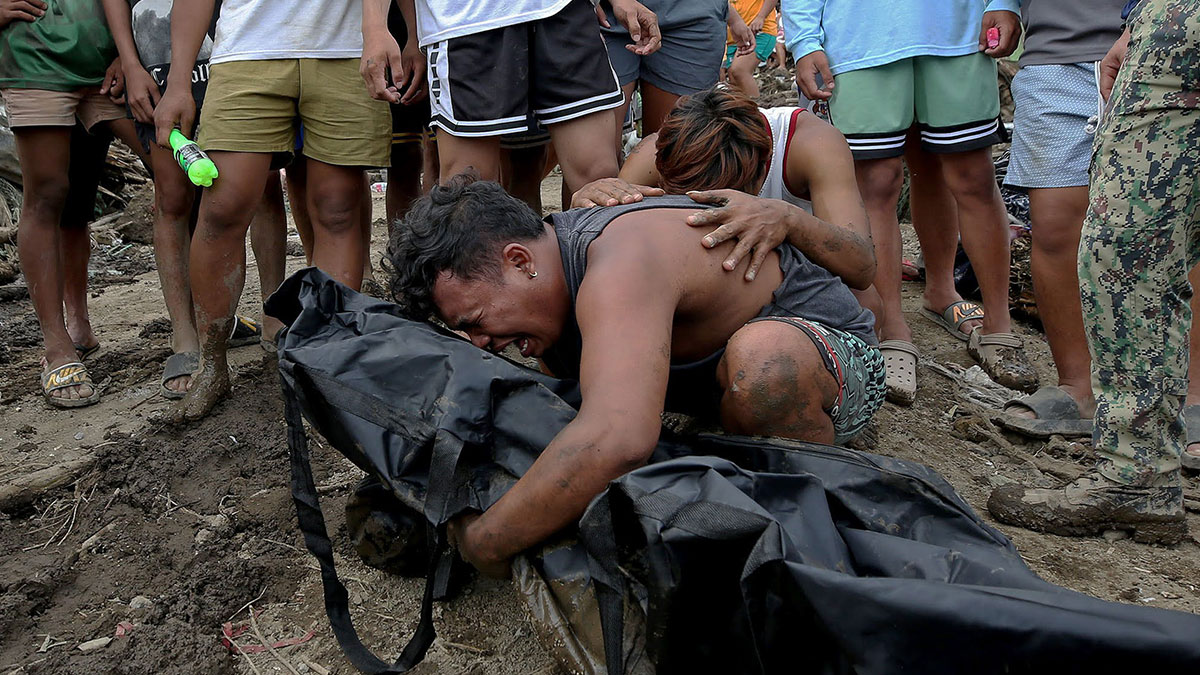
HUMAN TOLL A lethal landslide buried a neighborhood in Talisay, Batangas on Oct. 25, following heavy rains dumped by Extreme Tropical Storm “Kristine,” one of many six successive storms that lashed the nation between October and November. —RICHARD A. REYES
Human-induced local weather change fueled a uncommon string of back-to-back typhoons that battered the Philippines this yr and boosted the possibilities of highly effective storms making landfall, a brand new examine stated on Thursday.
5 typhoons and a tropical storm hit the Philippines in a 23-day interval throughout October and November, killing greater than 170 individuals and inflicting no less than $235 million in injury, in response to native authorities.
About 20 huge storms and typhoons hit the Southeast Asian nation or its surrounding waters annually, killing scores of individuals. Nonetheless, it’s uncommon for a number of main climate occasions to hit over such a brief interval.
To evaluate the position of local weather change within the string of storms, scientists from the World Climate Attribution (WWA) community used modeling to check climate patterns in right this moment’s world in opposition to a hypothetical world with out human-induced warming.
“Our outcomes present that situations conducive to the event of consecutive typhoons on this area have been enhanced by international warming,” they stated in a examine printed late Thursday. “The prospect of a number of main typhoons making landfall will proceed to extend so long as we proceed to burn fossil fuels.”
Article continues after this commercial
READ: Storm sequence jacks up rice imports to new highs
Article continues after this commercial
The analysis, which makes use of a peer-reviewed methodology, discovered local weather change made the situations that shaped and fueled the typhoons twice as seemingly. Globally, the variety of tropical cyclones will not be growing considerably.
Nonetheless, hotter seas are serving to gasoline an growing variety of sturdy storms and a hotter environment holds extra moisture, which leads to storms that drop extra rain.
Class 3-5 landfalls
The examine discovered that the hotter local weather makes it 25 p.c extra seemingly that no less than three Class 3-5 typhoons will make landfall within the Philippines in a yr.
The unprecedented formation of 4 typhoons across the Philippines final month was made 70 p.c extra seemingly on account of international temperature rise of 1.3 levels Celsius (2.3 levels Fahrenheit), it added.
“Such consecutive excessive occasions make it troublesome for populations to recuperate,” the scientists warned.
And the world’s present warming trajectory places the Philippines on target for even worse results, the examine stated.
Extreme Tropical Storm “Kristine” (worldwide title: Trami), thought-about by Philippines’ civil protection officers because the deadliest storm to hit the nation this yr, submerged tons of of villages within the northern Philippines and displaced greater than half one million residents.
Supertyphoon Man-yi (“Pepito), which introduced havoc to Catanduanes province final month, additionally prompted a province-wide energy outage that authorities are nonetheless struggling to rectify.
“Whereas it’s uncommon to see so many typhoons hit the Philippines in lower than a month, the situations that gave rise to those storms are growing because the local weather warms,” stated Ben Clarke, a climate researcher at Imperial School London’s Centre for Environmental Coverage, one of many report’s authors.
The examine warned that the repeated storms created a “perpetual state of insecurity,” with about 13 million individuals affected by no less than three of the intense climate methods.
Although scientists are cautious on the subject of attributing particular person climate occasions to local weather change, the consensus is that hotter oceans are intensifying rainfall and wind speeds throughout the globe.
“The storms have been extra more likely to develop extra strongly and attain the Philippines at the next depth than they in any other case would have,” Clarke stated.
Projected to extend
If temperatures rise to 2.6 Celsius above preindustrial ranges, those self same storm situations could be 40 p.c extra seemingly in comparison with now, he added.
An evaluation printed final month by US climate researchers Local weather Central stated that hurricanes had intensified considerably on account of record-breaking ocean warming, with wind quickens by 29 kilometers per hour (18 miles per hour).
The report additionally famous that the potential depth of typhoons as noticed this yr “has been made extra seemingly by an element of 1.7, or what quantities to a rise of seven.2 kph in depth.”
“These modifications are projected to extend with additional warming,” the report stated, noting that typhoons would additional improve by a further 7.2 kph in depth ought to the world develop into hotter by 2.6 C.
The rise of two.6 C “displays projected situations by the tip of the century given presently applied insurance policies,” learn the report.
The 5 typhoons and one tropical storm that hit the Philippines from October to November was “extraordinarily uncommon” that the WWA discovered the short succession troublesome to check “as a result of it’s so uncommon.”
Wanted funding
The Philippines wants main funding to sort out the challenges it faces from local weather change, the scientists stated.
“The Asian Improvement Financial institution just lately estimated that $102 billion to $431 billion per yr must be invested in Asian and Pacific international locations to assist them address local weather change. Nonetheless, in 2022, simply $34 billion was invested for adaptation within the area,” the group added.
“However in fact funding adaptation isn’t sufficient to guard the Philippines from local weather change,” stated Friederike Otto, the scientist who leads WWA. “Until the world stops burning fossil fuels, typhoons will proceed to accentuate.”
The examine was carried out by 12 researchers which included scientists from the Philippines, the Netherlands, Sweden and the UK. —Experiences from AFP, Reuters and Gillian Villanueva INQ



:no_upscale()/cdn.vox-cdn.com/uploads/chorus_asset/file/25835888/2176298339.jpg?w=360&resize=360,180&ssl=1)










